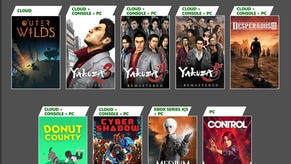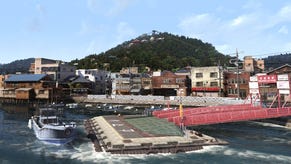Yakuza 4
Beaten into shape.
Their different fighting styles bring variety to the Yakuza series' simplistic yet satisfying brawling. Combat is a little easier than it was in Yakuza 3, which removes much of the frustration of its random battles, and it's massively violent. There's more blood, more visible damage, and the new finishing moves are brutal - snapping arms, smashing bicycles into street punks' heads, kerb-stomping, flinging them into lampposts. Teeth and blood go flying. When Akiyama stamps on someone's face, it really messes them up.
The levelling-up system has been simplified. You earn medals with each new level that can be used to unlock new abilities, spicing up the combat as the game goes on. Despite the huge variety of weapons to stove gangsters' heads in with - everything from baseball bats to golf clubs, bikes, traffic cones and tables, most with their own unique finishing moves - combat does begin to grate after a while. Happily, whenever it does, you get a new character to play with, with a new fighting style and new abilities. Akiyama is quick and straightforward, smashing heads into walls and pummelling with quick punches; Taiga's massive, so he can pick up scooters and desks and chuck people around, and charge punches; Tanimura's quite technical, with a lot of grapple reversals and bone-breaking holds.
Switching between the four characters' stories throughout the game rather than playing through them all in sequence might have upped the storytelling tension a little, but Yakuza 4 isn't a game lacking in excitement. There's no slow start on an Okinawan island, and no crying orphans. The game takes place almost entirely in Kamurocho, the same fictional version of Tokyo's Kabukicho that formed Yakuza 3's urban backdrop, though there are a few flashback interludes.
Yakuza 4 is clearly cut from the same code-cloth as its predecessor, particularly in the setting. This is hardly a problem, as Yakuza 3 was a beautiful-looking game, but we're wandering around the exact same shops, streets and arcades as we were a year ago. Even the dances in the strip club are the same. As before, the presence of real Japanese shops, brands, drinks, snacks and magazines contributes greatly to an incomparable sense of place.

Significantly, though, you get to go up onto the roofs and down into the shopping arcades, car parks and subways underground. It makes Kamurocho truer to the vertical structure of real Japanese cities, with their bustling overground streets and deserted underworld, and also makes the once-infuriating, QTE-interspersed Chase Battles much more fun. Leaping over the roofs of Tokyo is surely a fantasy that anyone who's spent time amongst Japan's angular urban architecture has entertained.
The episodic structure does make Yakuza 4's world less open. It's more difficult to come across sub-quests naturally, and there are far fewer of them. But Yakuza 3 had over a hundred sub-plots, and it's actually good to trim them down a little. There's still so much opportunity to waste your time messing around in arcades or at the batting range or, especially, in hostess bars that you can hardly criticise Yakuza 4 for a lack of content. All of the mini-games from Yakuza 3 make a return, and there's a smattering of new ones.











